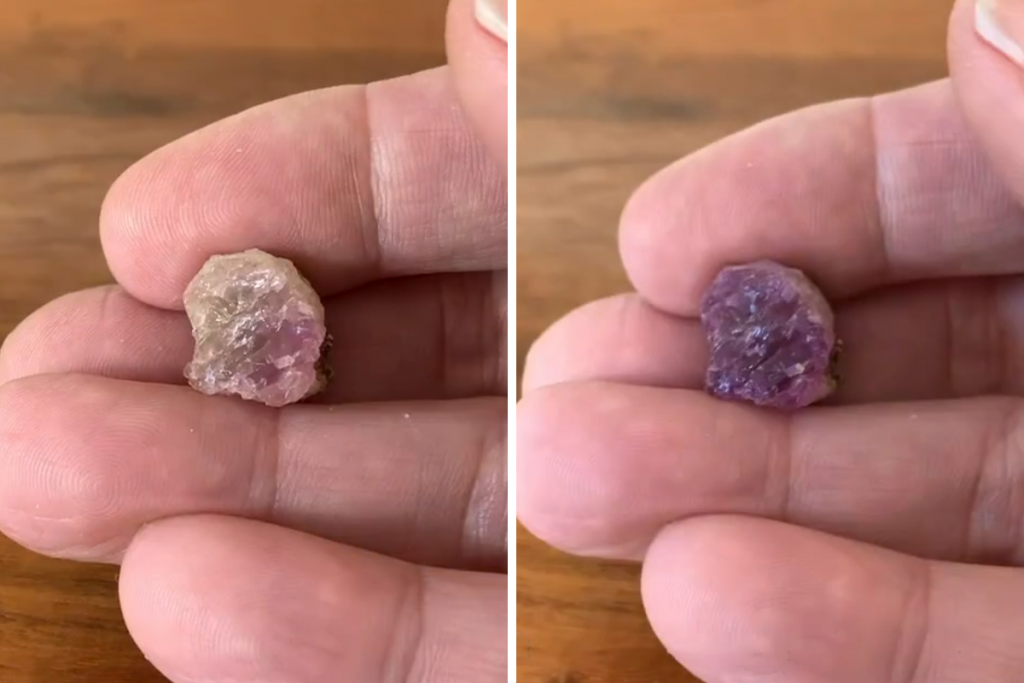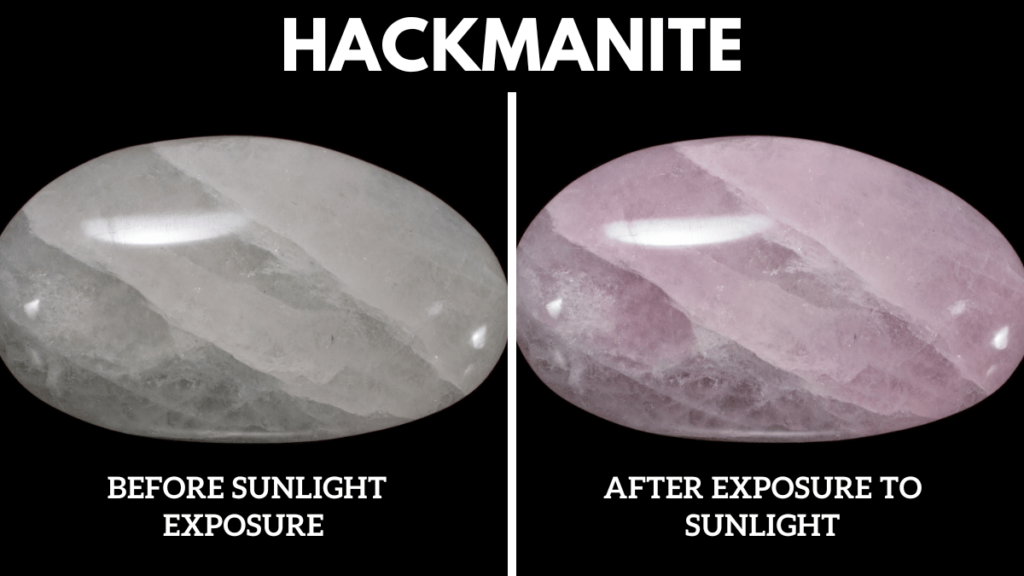Hackmanite is a rare form of sodalite and stands out in the mineral world due to its unique property of displaying tenebrescence. Tenebrescence, also known as reversible photochromism, is incredibly rare in natural materials.
Unlike other stones like alexandrite that change color immediately, hackmanite undergoes a gradual color transformation in sunlight. For instance, the variety found in Greenland starts as a strong violet when mined but fades to a pale green-white after prolonged sun exposure. Intriguingly, it reverts to its original hue when kept away from sunlight for a while.
Another variant of hackmanite from Burma is transparent when extracted but adopts a purple shade after sun exposure, a change that is also reversible.

Tenebrescence is the the ability of minerals to change color when exposed to sunlight.

History of Hackmanite
The history of hackmanite traces back to its discovery in Greenland by L.H. Borgstroem in 1901. It was christened in honor of the renowned Finnish Geologist, Victor Axel Hackman. Today, significant deposits of this mineral can be found in countries like Afghanistan, Myanmar, Canada, Norway, and Russia.
Research and Discoveries
What sets hackmanite apart is its remarkable ability to change color upon exposure to UV radiation repeatedly without deteriorating. This unique trait has piqued the interest of researchers, especially at the University of Turku, Finland. They’ve been delving into the properties of hackmanite for nearly a decade, unearthing its potential in various applications such as personal UV monitoring and X-ray imaging.
One of the groundbreaking revelations from their research is the structural mechanism behind hackmanite’s color change. When exposed to UV light, sodium atoms in its structure shift significantly from their usual positions and then revert, a phenomenon termed ‘structural breathing‘. This movement doesn’t compromise the mineral’s structure, even if repeated multiple times.
Further studies have shown that hackmanite’s ability to switch between its white and purple forms is highly consistent. This durability is attributed to its robust three-dimensional cage-like structure, akin to that in zeolites. Such a structure permits atomic movement within its confines while maintaining the cage’s integrity, enabling the mineral to change and revert its color almost indefinitely.
The Future of Hackmanite
The potential of hackmanite is vast. The Intelligent Materials Research Group at the University of Turku is currently exploring its use in diverse applications, from replacing LEDs to X-ray imaging. One of the most promising avenues under investigation is a hackmanite-based dosimeter for the International Space Station. Given that the intensity of hackmanite’s color is directly proportional to the UV radiation it’s exposed to, it can be employed to gauge the UV index of the Sun’s rays. This property is also being harnessed for everyday applications, with a mobile app already developed to measure UV radiation levels.
Other Stones That Demonstrate Tenebrescence
Other examples include some varieties of scapolite, which changes from clear to blue on exposure to UV radiation, and tugtupite which takes on a raspberry color with prolonged UV exposure which reverses.
Tenebrescence is an interesting phenomenon to most of us, and a good example of the really odd qualities that can be held by some stones.
For more information on Hackmanite and to learn more about it’s color changing properties, visit:
- Online rock and mineral club for collectors of all levels!
- Find community with like-minded rock and mineral enthusiasts.
- Monthly Giveaways!
- Free Access to Entire Digital Library of Products (current and future products)*


